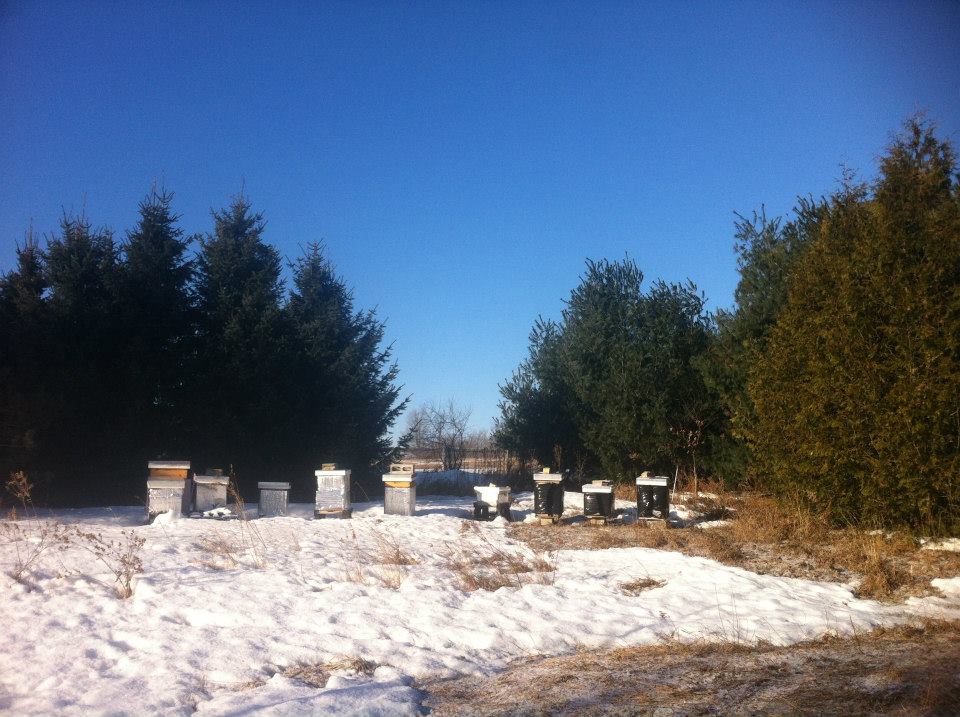To help develop and nurture your inner WOW Shoresh will be sharing seasonal tidbits about the lives of our honey bees and what they’re up to at Bela Farm.
“As civilization advances, the sense of wonder declines. Such decline is an alarming symptom of our state of mind. We will not perish for want of information but only for want of appreciation.”
Rabbi Abraham Joshua Heschel, Man is Not Alone (1951)
“What do Bela’s Bees do during the winter months?”
If you were to visit Bela’s Bees during the winter, it would appear that they were inactive and hibernating but this is not the case. Honey bees remain active in the winter by drawing on unique coping mechanisms that allow them to survive.
Once the fall floral resources finish blooming (the last fall flowers in Ontario are New England Asters and Goldenrod), the honey bees slow down and settle into their hives. As temperatures drop, the queen stops laying eggs, the male drones get forced out of the hive (they eat too much precious honey) and the female worker bees start focussing on insulating the colony rather than gathering nectar and pollen.
The main objective of winter bees is to keep the queen safe and warm so the rest of the colony doesn’t die.
Honey bees need 3 things to survive the winter:
- The colony must have a healthy population of winter bees and a healthy productive queen.
- There must be sufficient and accessible food stores (i.e. honey, sugar syrup, etc)
- The hive must bee protected from wind and water yet ventialted enough to prevent condensation which is lethal to the colony
In the late fall, Shoresh’s beekeepers assist the bees by managing mites and viruses, wrapping the hives and making sure there is enough honey (approximately 60 lbs/hive) to feed the remaining bees for the entire winter.
Once the temperature drops below 12 to 14C, the winter worker bees surround the queen by forming a compact winter cluster around her. The cluster is basically a big, vibrating, living clump of bees in which the bees flutter their wings and shiver. This constant motion generates enough heat to keep the hive warm. WOW, right!? Shivering takes a lot of energy so the beekeeper must make sure that the bees have enough honey to shiver and keep the hive warm.
While the queen remains at the centre of the cluster (so she is safe), the worker bees travel from the centre of the cluster outwards so no one gets too hot or cold and so that all the bees can access the available honey stored in the surrounding combs.
I’m not sure about you but this makes me say “WOW” and deepens my sense of awe and wonder for the world. I hope it does the same for you.



